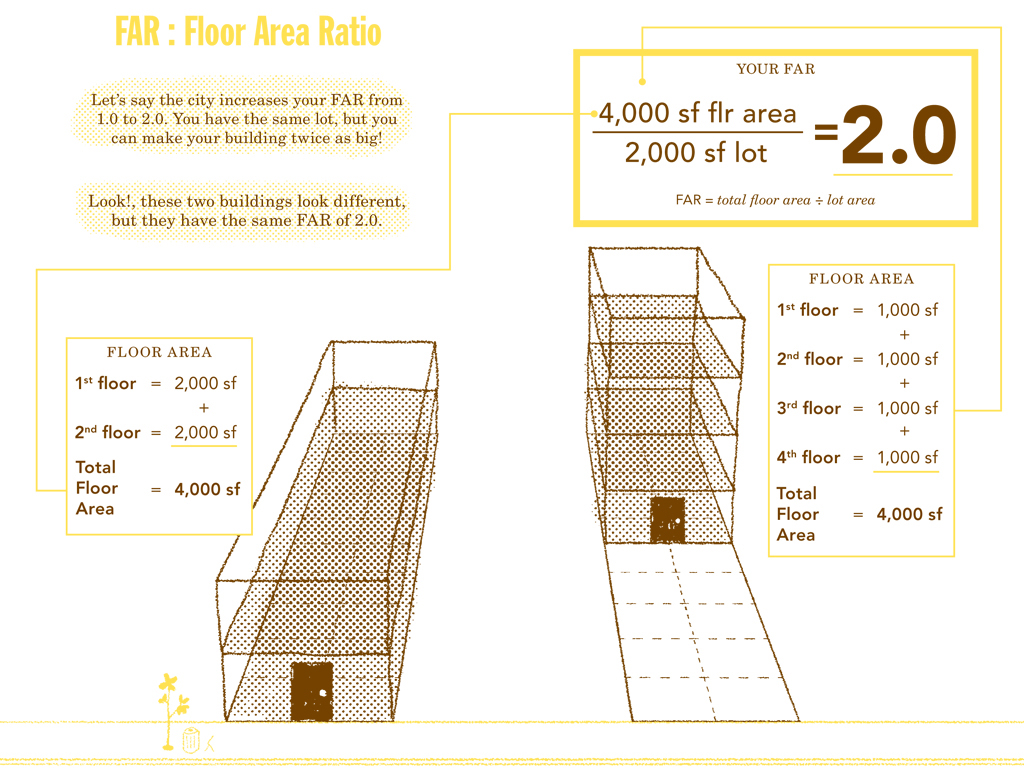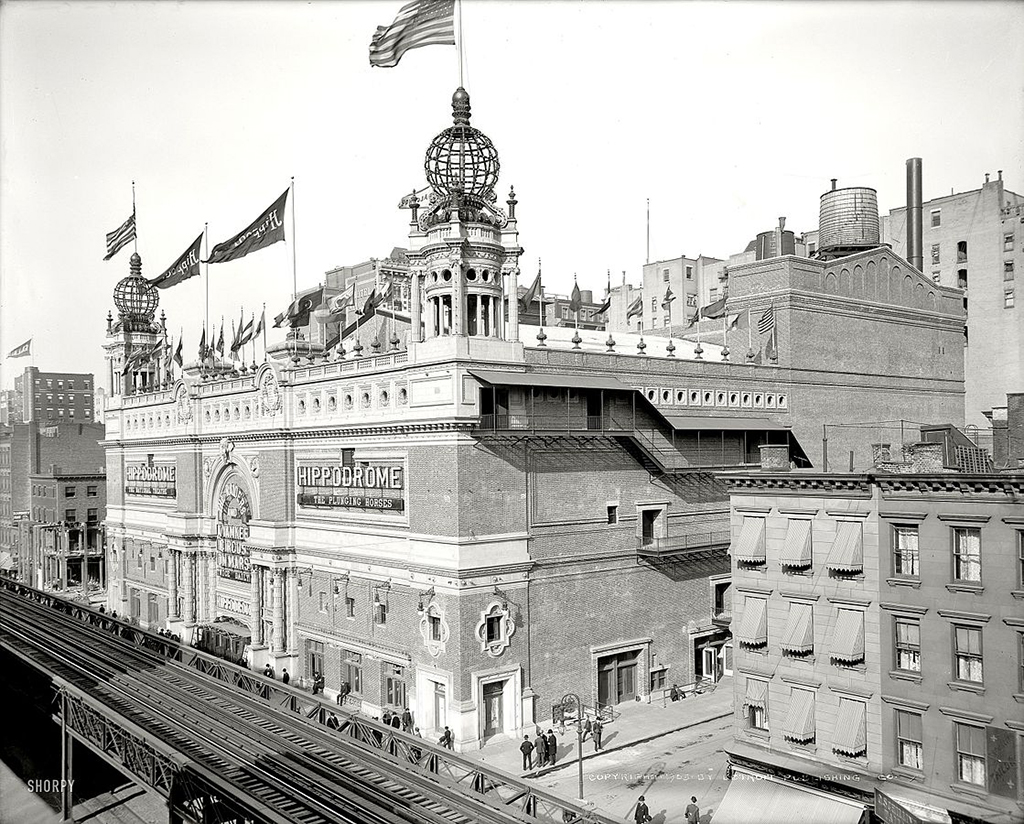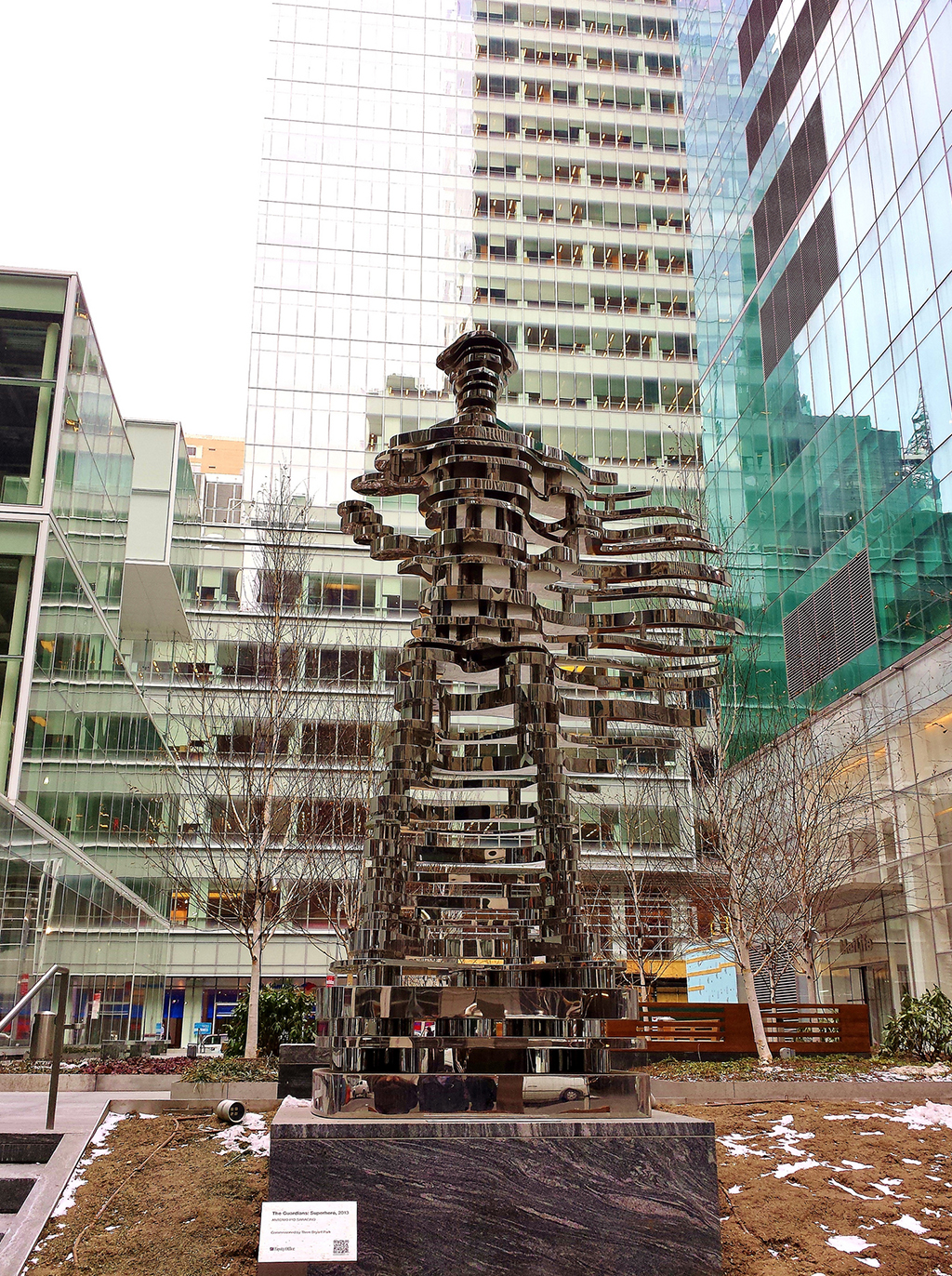
We are celebrating 15 years — and counting — of stories that are deeply researched and deeply felt, that build a historical record of what the city has been.
We are celebrating 15 years — and counting — of stories that are deeply researched and deeply felt, that build a historical record of what the city has been.
Amid contentious debate on rezonings across the city, the late 2013 hubbub around an upzoning proposal for East Midtown has, for the moment, abated — but hasn’t disappeared. In a bid to spur significant new development for the first time in decades, the de Blasio administration is currently retooling the Bloomberg-era plan to allow developers to construct much larger buildings in the office district. The new approach aims to address concerns raised with its predecessor, among them protections for historically significant buildings, much needed upgrades in local infrastructure to support more intense development, and the ability for local landmarks to sell their air rights. Though a blueprint has been outlined, no official proposals for rezoning have yet been made by the City’s Department of City Planning.
Whether this rezoning eventually occurs or not, the buildings in Manhattan’s core aren’t getting any younger. And as New York competes with the likes of London and Hong Kong to attract international business, renovation of existing structures has become crucial for meeting changing client demands while making building systems more efficient. New York-based MdeAS Architects counts such commercial redevelopment among its bread and butter. Here, Architectural League Executive Director Rosalie Genevro takes a walk through Midtown with MdeAS principal Dan Shannon to consider the market, regulatory, and cultural forces behind these projects and their potential to transform aging assets into competitive buildings. –J.T.
What’s going on in terms of development in Midtown these days?
You have pockets of large new development like Hudson Yards and Manhattan West. Then, of course, the other huge development is One Vanderbilt, right next to Grand Central. There’s an enormous explosion of condo developments, especially west of Fifth Avenue, where large sites are being assembled and built for condos, hotels, or large mixed-use projects; I don’t know of any new office buildings in that zone. And then, redevelopment of existing office buildings makes up a large amount of development work in core and East Midtown.
What determines whether a developer redevelops a building or demolishes it and builds new?
There are two major factors: one is, the building is there, and it is more than likely larger than a building that could be built under current zoning. East Midtown was downzoned after a lot of these office buildings were constructed in the 1970s. Some of them have a floor area ratio (FAR) of 18 and others have up to 21 FAR because of certain bonuses.
If we started again by knocking down an existing building, the allowable size of the building under the current zoning would go back down to 15 FAR. Nobody’s going to take down an 18 FAR building to put up a 15 FAR building that’s significantly smaller.
The second reason for redevelopment is just the relative expense and the time required. It takes two years to redevelop a building; it takes four to five years to build a new building. So that’s a loss. And though it’s still very expensive to completely redevelop a building, it costs a lot more to build new. But if East Midtown were rezoned to allow buildings of 30 FAR, many of the existing buildings would come down over time to make way for those much bigger buildings. Instead of taking an 18 FAR building, emptying the tenants out, and putting $400 million into redeveloping, you might rather wait a little bit longer to see if that policy comes through, then knock it down and start again.
I don’t think anybody has strong feelings about all those boxes from the 1970s on Park Avenue. They aren’t prominent buildings, and nothing anybody should be proud of architecturally. But they’re big, and they’re there.
But there is a way to fix them through redevelopment.
Yes, though not without enormous effort.
Then why all the rhetoric about East Midtown being a tired district that cannot serve the modern world? The buildings are big and they can be remade to meet what tenants want, and there’s not as much demand for the huge workplace as there used to be. So why this push to rezone the district to make way for much bigger buildings?
It’s all in the context of competition with London and Hong Kong. We want to maintain our status as a world city. To do so we have to go big. London in the last decade broke through with phenomenal architecture. And in Hong Kong, they’ve always had that possibility more than we have.
It’s a lot about pride of place. We need new, shiny things. Although just when you decide that’s what you need, everybody wants cool, old buildings — so there’s that great confusion. Now, if you’re not going to have an old, cool building, you better find somebody to make a spectacular new one, and that’s why you’re seeing the new superstars coming in and starting to shake things up on what an office building looks like now. The only way to incentivize this new construction is to increase the buildable area on these sites.
How does redevelopment work? Do you strip the building down to the bare structure and start over from there?
It depends on the project — some remain occupied and functioning during the project, which requires about twice as much time; others are emptied and really stripped down.
The development goals of a project are one consideration. The other thing is, these buildings have a life cycle. You could say that a building built in the 50s or 60s has a 30-year life expectancy, but that’s pushing it. The exterior walls certainly weren’t built for that extended period of time. In order to extend that cycle, building management spends an enormous amount of time to keep these buildings well maintained. The windows would leak air and water, so they would caulk them and keep them in serviceable order. The mechanical systems, other than the chillers, which are built to last forever, are not very efficient. The risers, vertical pipes, often corrode. Good maintenance is the only thing keeping these buildings alive for that long.
Now, you’re looking at either a significant amount of maintenance work or, for not much more effort, an opportunity to really reposition the asset. That’s essentially what happened when we did 330 Madison Avenue. The building is two blocks away from Grand Central, it’s bigger than what could be built on the site now, and it couldn’t be knocked down because it was occupied. We did it because we knew we could push the rents higher if we had a better building. We created a spacious lobby for the building with panazzo — a stone loved in Imperial Rome that you can see reused in columns at the Archbasilica of St. John Lateran there.
But we’ve always said that unless you’re fundamentally changing the way the building works — if you’re only focused on making the building look nicer — then it’s a wasted, unfulfilled effort. You’ve got to change the customer experience. That means a much better mechanical system, so that the air is filtered and temperature easy to control. We like to see out and we like sunlight to come in, so you make the window openings bigger, if you can. But you also moderate the energy coming in and going out with a better glass system. We often convert whole ceiling light systems to LEDs.
If you’re not doing those things — if you just want a shinier thing — then you’re missing a big opportunity. Our primary goal is to improve the kind of building it is. And now you’re seeing another level: making more interesting spaces. Why can’t you take some floors out and reallocate the area a little bit? Floor to floor heights may be challenging, but if you create pockets of larger space, community space, and exterior space, you’ve improved the asset.
These redevelopments often include recladding the building, wrapping it in a new glass exterior. What considerations go into that?
Because many of the buildings being redeveloped are occupied and in use, you can’t take off the old exterior of the building to put a new one on. In a case where the existing enclosure goes right up to the property line, your new façade will have to project beyond the property line. If the building was built before 1968 (when a new building code was issued), you are allowed to extend a wall out past the property line four inches. Why? It goes back to the fact that brownstones were losing their brownstone. As you know, brownstone wears away, so the building code prior to 1968 was written to account for people re-surfacing their brownstones with brick veneer, which was four inches thick. Existing buildings are still governed in part by the building code they were built under. So starting at 430 Park, I wanted to extend out. Jerry Gillman, who really invented the thinking part of code consultancy and passed away several years ago, thought we could apply that provision. He always used to say “Well, let’s read this [the code] together.” It was news to the building department when we told them we wanted to take those four inches, but it was accepted. When you take a little bit of the code and expand it on a large development, it’s always a bit of a thing. But without those four inches, many of our redevelopment projects would not have been possible.
What other building systems do you usually update?
We often convert elevators to “destination dispatch.” The old elevator systems work on the basis of what elevator is close to what floor and what’s got weight on it — that is, if the elevator has passengers. That’s all it was thinking. With destination dispatch, people choose their floor before getting on the elevator, and the system decides which sequence of elevators is going to result in the shortest overall trip to get people to their desired floor. It’s far more efficient.
If we’re designing a new building, this allows us to reduce the number of elevators we need. That’s huge: elevators count as floor area, so the more elevators the less usable floor area. Destination dispatch is also more efficient. At 1290 Avenue of the Americas, where we installed destination dispatch, the quality of service was probably increased by about 30%.
When we designed 510 Madison Avenue, we also connected the dispatch to the security system, so when tenants swipe their security card, the floors that they’re allowed to go to will show up for selection. You can’t cheat and get to another floor you don’t have access to. People get a little wonked out about that.
Your firm has redeveloped three buildings near the corner of 42nd Street and Sixth Avenue that have really changed that area. Tell me about those projects.
The first one, which my partner Raul de Armas did, was the Hippodrome at 43rd and Sixth, owned by Edison Properties. The original Hippodrome, from the teens, was a venue for crazy events. They actually flooded the interior one time to stage a mock naval battle. That building was knocked down in 1939, and an Ely Jacques Kahn and Robert Jacobs-designed building was built on the site about a decade later. It was not a very distinguished building, and that’s the one we redeveloped. We did leave and restore the interesting bas-relief aluminum top of the building. Raul is so sensitive about that stuff. When they were drawing the plans I said, “ Really?” He said, “Why not? It’s a lovely thing, it works with what we’re doing, and we’re not going to do any better.” I mean, think about all the great buildings that Kahn did. This wasn’t one of them, but that piece is great. The building also has great structure — it’s a two-way waffle-slab construction.
After the Hippodrome we started work on the W.R. Grace Building, on 42nd between Fifth and Sixth Avenues. This building was always the cheap version of 9 West 57th Street. It never had all the travertine on it or a good storefront, so Brookfield wanted to reconstitute it all when they bought it. But the building is a pure, classic SOM kind-of-modern, which we wanted to respect. We undertook an enormous travertine research project to find the source of the original travertine to replace the exterior and clad the new storefronts. And it is truly the same travertine. It took us a year of research with the Mariottis in Italy to find it.
It was important to do so: 50 years of wear can cause trouble, especially because travertine doesn’t really belong in the Northeast. It may have built Rome, but Rome does not have our climate. No one was going to tell [SOM partner] Gordon Bunshaft that it doesn’t belong here, though. Ric Clark, the head of Brookfield, really likes this building, and he was also committed to sticking with the travertine for the pavement as well. It can get slippery, so we put a finish on it to add a greater abrasive, friction quality than it had originally. But you can’t go to a client right now and say, “I’m going to put travertine on your plaza.” But Ric said, absolutely, lets do the right thing and stick with SOM’s original design.
The third around this intersection was our redevelopment of 3 Bryant Park, formerly known as 1095 Avenue of the Americas. This used to be the New York Telephone Building, and it was built for two reasons: to house all the telephone switches in Midtown Manhattan and as the headquarters of the company, which is now Verizon. Verizon has eliminated some of the floors devoted to telephone switches; six floors will become fewer, and eventually that whole infrastructure will shrink to the size of a laptop.
That shift allowed us to completely close the Sixth Avenue entry to the building and turn that space over to retail along Bryant Park. We reoriented the entire building to this plaza just west of the building. There, we moved the mechanical systems two floors up, so that you didn’t have to walk by it to get into the main entrance. We also constructed what we call The Cubes on either side of the plaza, glass structures that include retail spaces and lead down as much as two floors to enormous facilities underneath the plaza.
The capital effort on a plaza like this is crazy, because essentially you’re just building on a building. There’s no dirt here; there are two floors and a roof underneath this whole plaza. You have to provide enough space for the soil and plants that will be in the plaza while waterproofing the whole plaza to stop any leaking into the facilities below.
We were fortunate to have sculptor Antonio Pio Saracino come to us through art consultant Helen Varola — she let us know that the Italian government wanted to gift the US a sculpture and asked if we had any place for it. We had an obligation for two sculptures in the plaza, so we ended having the stumps waiting for him. Antonio is trained as an architect, and he really reacted to that and created Hero and Superhero.
To close, do you think we’ll see more of this kind of redevelopment across the city, in and outside of Midtown?
Definitely. Even if a Midtown rezoning passes that would allow much larger buildings on some sites, for every one that qualifies there will be ten smaller buildings that won’t. For those structures that are sicker — that don’t have architectural quality worth preserving and can benefit from a complete regeneration — there will always be this reimagining of a property with an existing skeleton. This is happening across the city and across sectors, in residences with brick facades that are getting past their prime to institutions that cannot move due to real estate pressures. Redevelopment will provide a continuous benefit. In that way the past is a major part of the future of New York — these buildings aren’t going to be landmarked, nor should they be, but they progressively keep adding to the city.
Correction: An earlier version of this article misstated the name of the owner of the W.R. Grace Building, Brookfield Properties, and the misspelled the name of its CEO, Ric Clark.
The views expressed here are those of the authors only and do not reflect the position of The Architectural League of New York.




